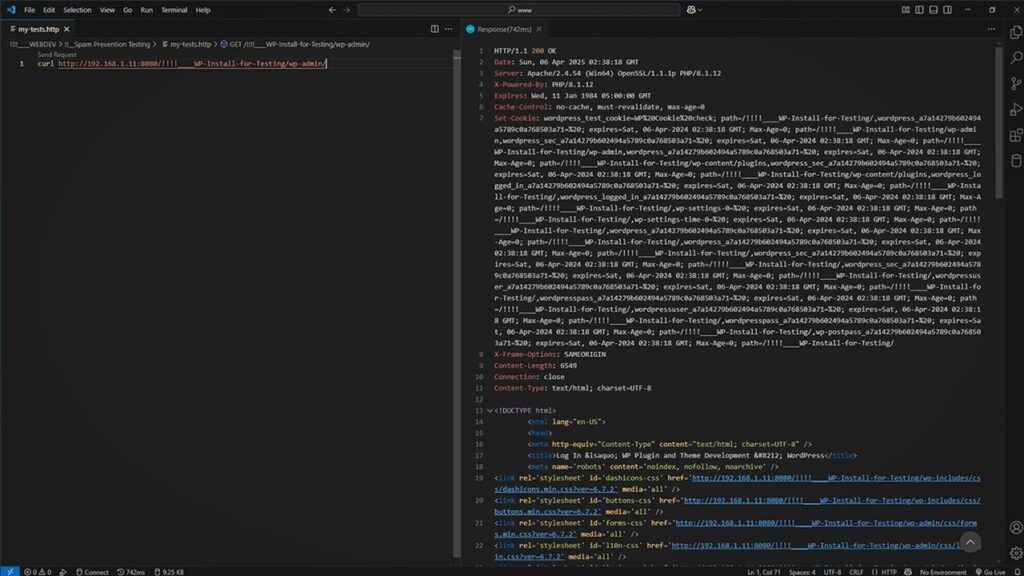What is cURL and What’s It Used For?
A Comprehensive Guide to cURL in Development, DevOps, and API Testing. This in-depth guide explores what cURL is, how it works, and why it’s a fundamental tool for developers, sysadmins, and DevOps engineers. Learn how to use cURL for API testing, file transfers, automation, and debugging HTTP requests — with real-world examples, best practices, and security tips included.
Table of Contents
- Introduction
- What is cURL?
- How Does cURL Work?
- Key Features of cURL
- Common Use Cases for cURL
- How to Use cURL: Common Command Examples
- Security Implications of Using cURL
- Alternatives to cURL
- Top 5 Frequently Asked Questions
- Final Thoughts
- Resources
Introduction
In the world of software development, APIs, and DevOps automation, tools that simplify communication with remote servers are crucial. cURL, short for Client URL, is one such tool — lightweight, powerful, and endlessly versatile.
Whether you’re testing REST APIs, downloading web content, or automating data transfers between systems, cURL is an essential utility that developers and sysadmins alike lean on daily.
What is cURL?
cURL is a command-line tool and library (libcurl) used to transfer data to or from a server using a wide range of protocols, including:
- HTTP / HTTPS
- FTP / FTPS
- SCP / SFTP
- LDAP
- FILE
- SMTP
- and many others
It was created by Daniel Stenberg in 1997 and is open-source under the MIT License. Today, it’s built into virtually every Unix-based OS (Linux/macOS) and easily installable on Windows.
How Does cURL Work?
At its core, cURL uses URL syntax to retrieve or send data over the internet or local network using the command line. You specify:
- A target URL
- An HTTP method (GET, POST, PUT, DELETE, etc.)
- Optional headers, authentication, or payloads
Then cURL sends the request and returns the response — including headers, body, and status codes.
cURL also supports cookies, SSL certificates, proxies, and rate limits — making it ideal for both quick tasks and large-scale automated jobs.
Key Features of cURL
- ✅ Protocol Agnostic: Supports over 25 different transfer protocols
- 🔐 Secure: TLS/SSL support, certificate handling, and SSH key management
- 🧩 Customizable: Modify headers, query params, user agents, and more
- 📦 Portable: Runs on Windows, Linux, macOS, Android, and embedded systems
- 🤖 Scriptable: Easily integrated into shell scripts, CI/CD pipelines, and test suites
- 📜 Verbose Logging: Helps trace network calls and debug connection issues

Common Use Cases for cURL
1. API Testing
One of the most common uses for cURL is testing RESTful APIs. Developers can quickly simulate HTTP requests directly from the terminal.
curl -X GET https://api.example.com/users
Add headers or JSON payloads:
curl -X POST https://api.example.com/login \
-H "Content-Type: application/json" \
-d '{"username":"admin","password":"123456"}'
2. Downloading Files
You can 2-downloading-filesdownload files (even large ones) using:
curl -O https://example.com/file.zip
Or resume a broken download:
curl -C - -O https://example.com/file.zip
3. Automation Scripts
In DevOps, cURL automates tasks like:
- Uploading files to servers
- Triggering CI/CD workflows
- Checking deployment statuses
Example: Triggering a GitHub Action:
curl -X POST -H "Authorization: token <TOKEN>" \
https://api.github.com/repos/user/repo/actions/workflows/deploy.yml/dispatches \
-d '{"ref":"main"}'
4. Debugging Web Requests
Use -v (verbose) or --trace to inspect headers, cookies, TLS handshakes, and server responses.
curl -v https://example.com
This is especially useful for debugging CORS issues, SSL certs, and proxy behavior.
5. Working with RESTful Services
Interfacing with third-party APIs like Stripe, Twilio, or OpenAI? cURL is often used in quick tests or documentation examples.
curl https://api.openai.com/v1/models \
-H "Authorization: Bearer sk-xxxxx"
How to Use cURL: Common Command Examples
| Use Case | Command Example |
|---|---|
| Basic GET request | curl https://example.com |
| Download file with filename | curl -O https://example.com/file.zip |
| POST JSON payload | curl -X POST -H "Content-Type: application/json" -d '{"key":"value"}' https://api.example.com/data |
| Custom headers | curl -H "X-Custom-Header: value" https://api.example.com |
| Authentication (Basic) | curl -u username:password https://example.com |
| Send data from file | curl -d @data.json -H "Content-Type: application/json" https://api.example.com |
| Follow redirects | curl -L https://short.url |
| Save output to file | curl https://example.com -o output.html |
Security Implications of Using cURL
While cURL is powerful, it must be used cautiously, especially when handling sensitive data:
- 🔒 Avoid logging authentication tokens or passwords in shell history
- 🛡️ Validate SSL certificates (
--insecurecan expose to MITM attacks) - 👁️ Mask sensitive data in CI/CD logs
- 📁 Sanitize inputs when piping into shell commands
Alternatives to cURL
While cURL is the most widely used tool of its kind, others offer different trade-offs:
| Tool | Description |
|---|---|
| HTTPie | A human-friendly HTTP client with color-coded output |
| Postman | GUI-based API testing and automation platform |
| Wget | Focused on downloading files; handles recursive downloading |
| PowerShell Invoke-RestMethod | Windows-native command for RESTful APIs |
Python requests |
Lightweight HTTP library for scripts |
Top 5 Frequently Asked Questions
-X flag lets you specify the HTTP method (e.g., GET, POST, PUT, DELETE). Some methods (like GET) are default.
-u for basic auth or -H "Authorization: Bearer <token>" for bearer tokens.
--insecure) should be avoided unless absolutely necessary.
Final Thoughts
cURL is much more than a simple data transfer tool — it’s a Swiss Army knife for developers, DevOps engineers, and security testers. Whether you’re probing a remote server, testing an API, or scripting file transfers, cURL gives you precise control with minimal overhead.
The most important takeaway? Learning cURL is an investment in efficiency. It equips you with the flexibility to interact with virtually any online resource programmatically — from terminal commands to production-grade workflows.
class=”subtitlemain”









What size hair rollers are needed to implement this?
Oh boy, that’s a good one. Probably 50+ 2″ rollers and a blow torch to heat them up.